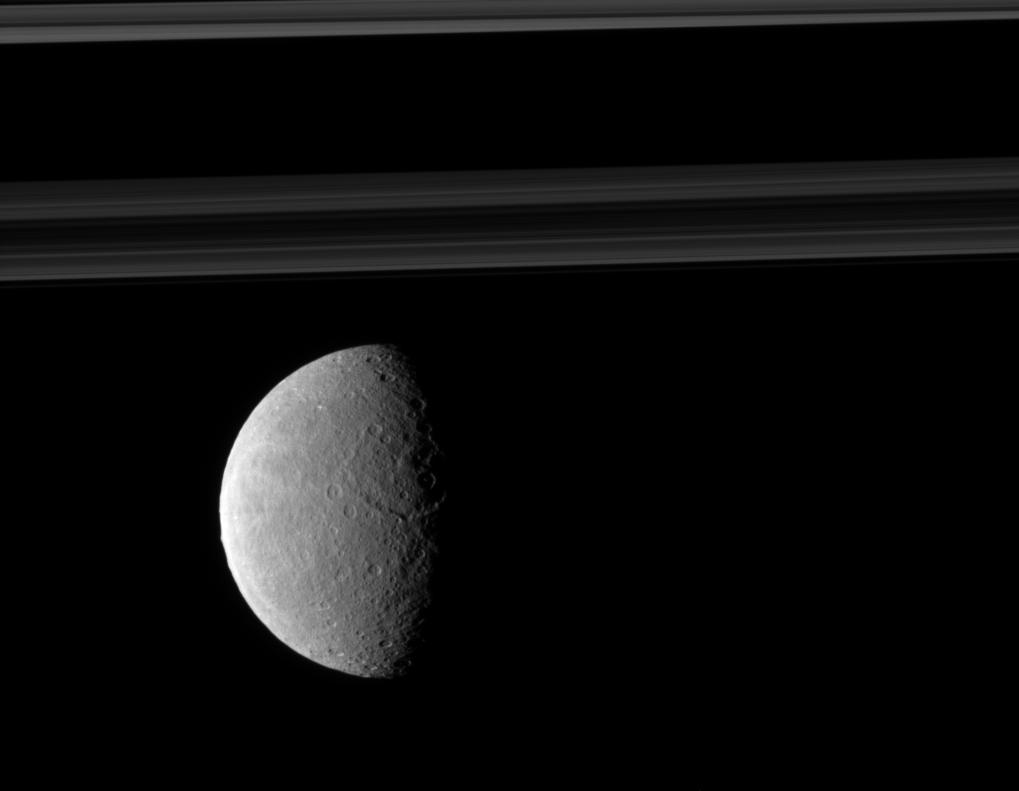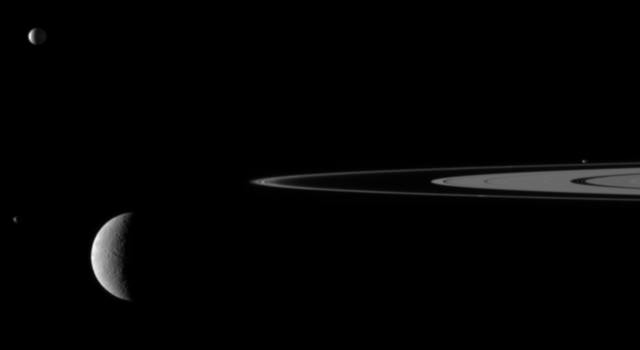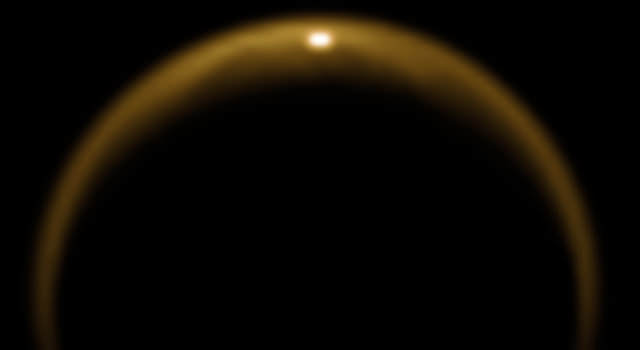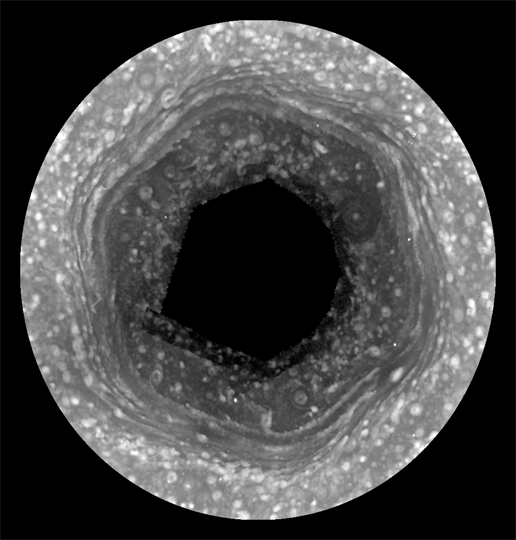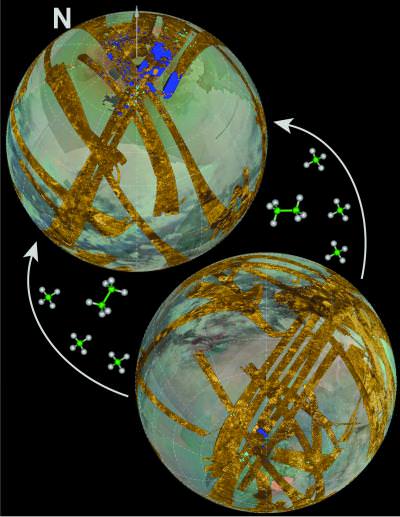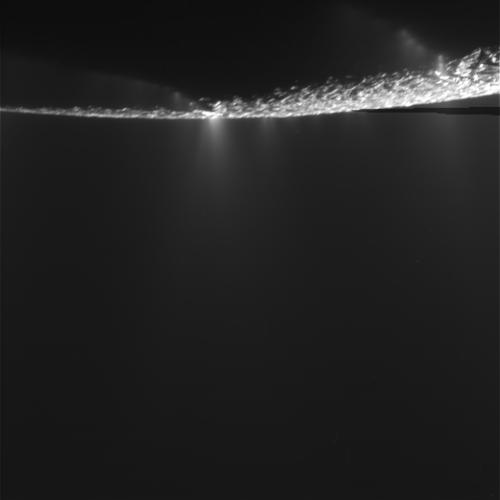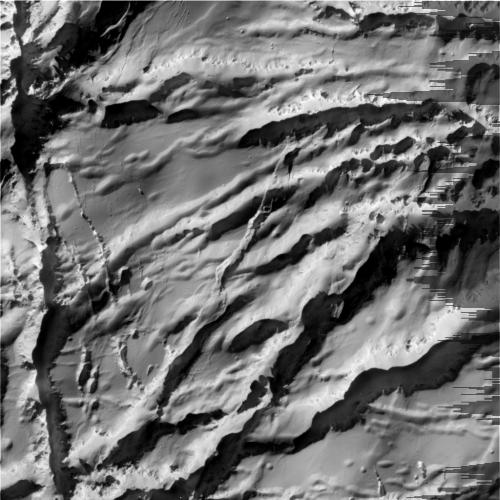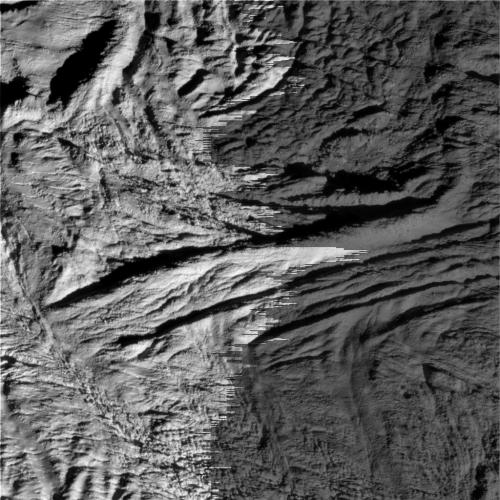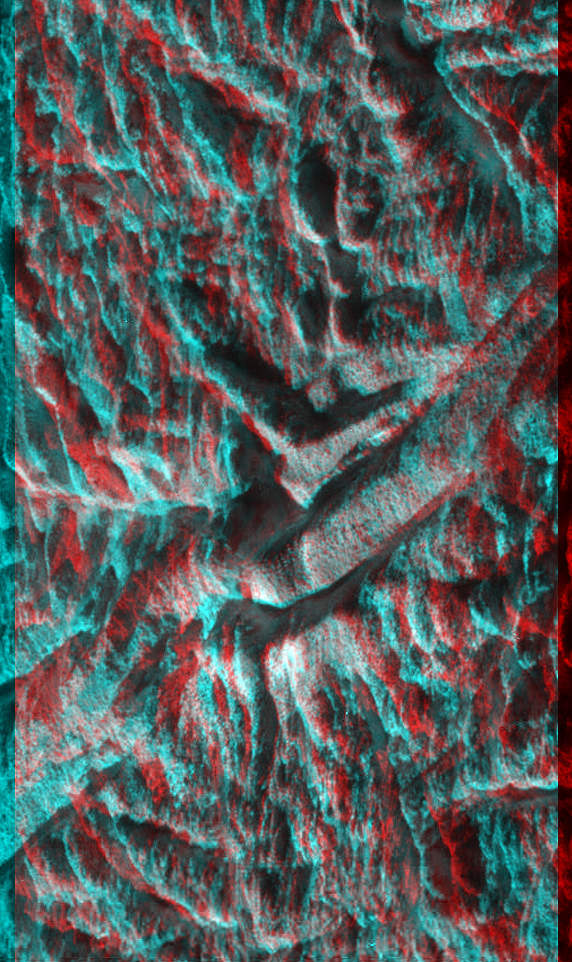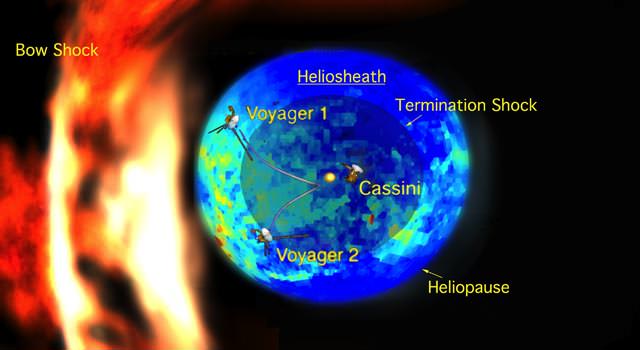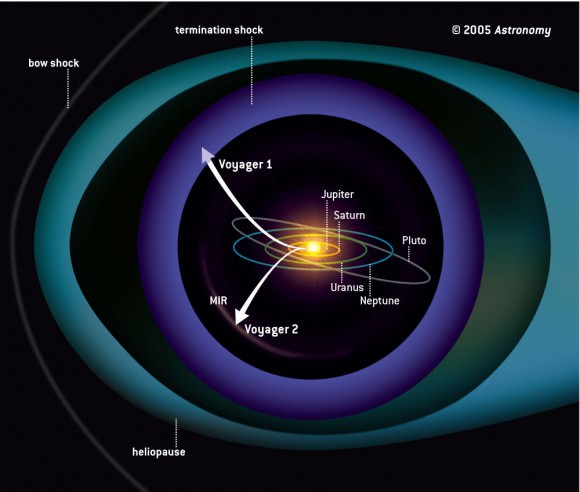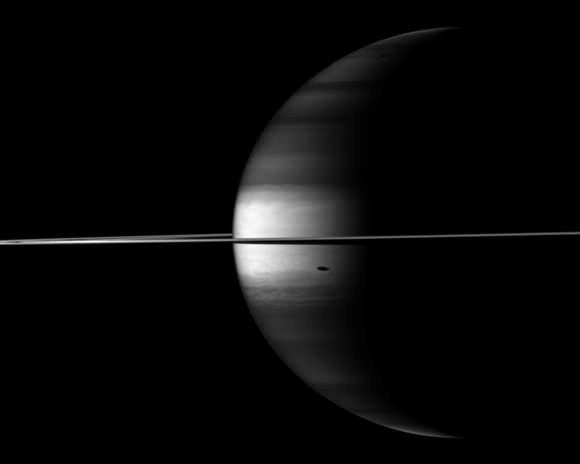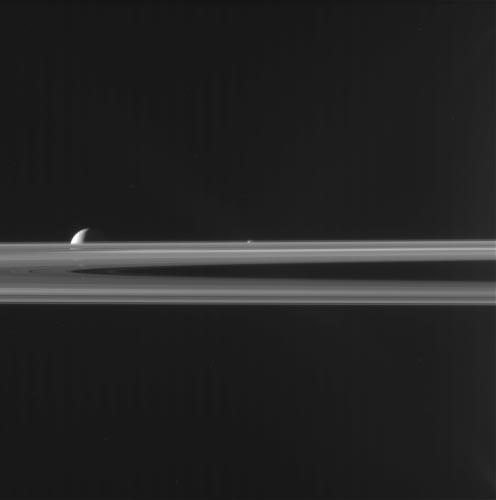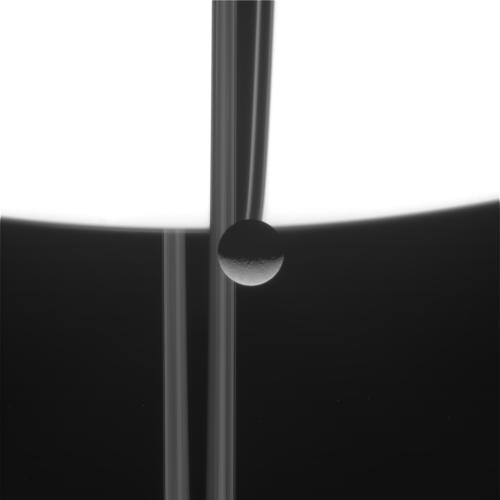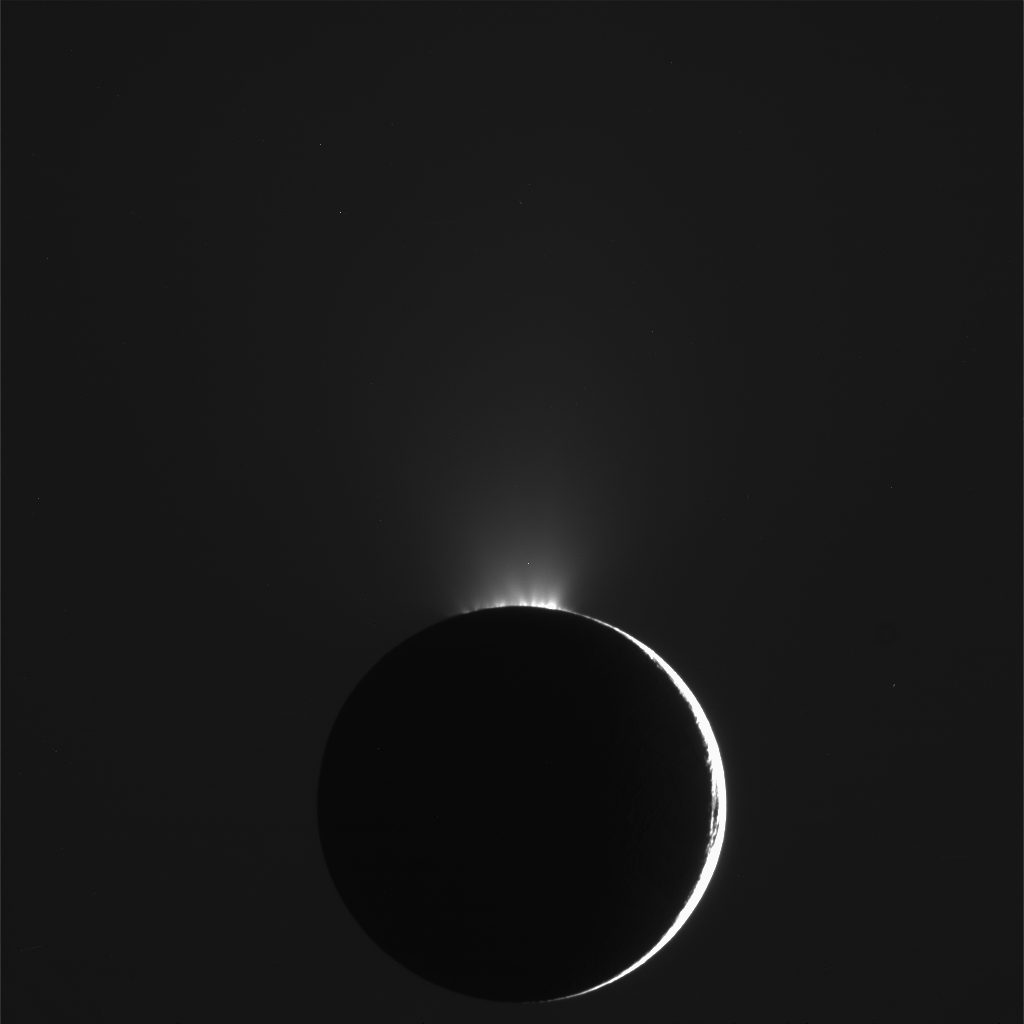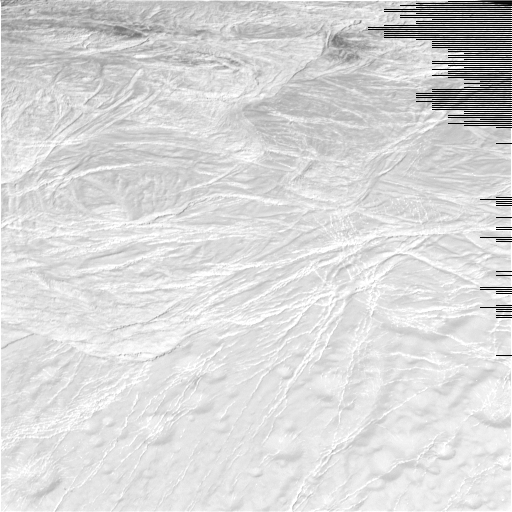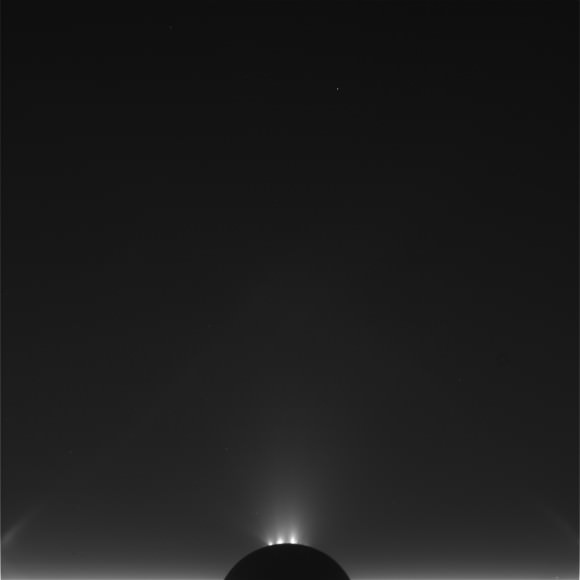Caption: Cassini captures Rhea and Saturn’s rings. Credit: NASA/JPL/Space Science Institute
The stunning images just keep coming from Cassini. Here’s a collection of three recent images. Above, Saturn’s moon Rhea teams up with the planet’s rings, creating an image that could only come from the Saturn system. Taken on Nov. 4, 2009, Rhea’s trailing hemisphere shows off its wispy terrain. The view was acquired at a distance of approximately 762,000 kilometers (473,000 miles) from Rhea, with the rings farther away, off in the distance.
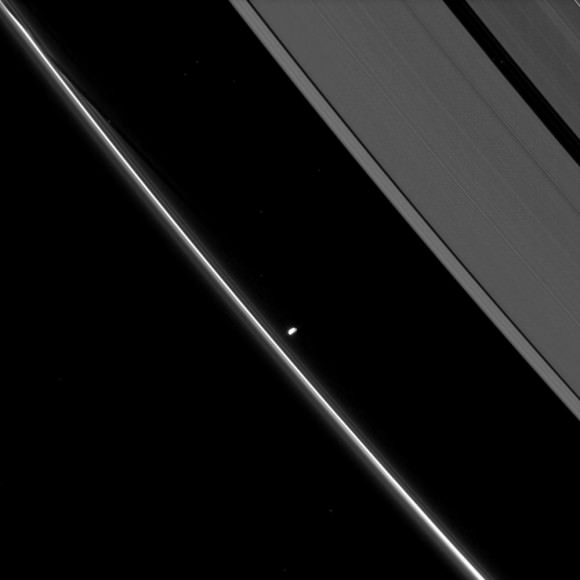
Prometheus and rings. Credit: NASA/JPL/Space Science Institute
Saturn’s small moon Prometheus, slightly overexposed in this image, shows off its potato-like shape as it orbits in the Roche Division between the A ring and thin F ring.
Prometheus (86 kilometers, or 53 miles across) periodically creates streamer-channels in the F ring, and a streamer-channel can be seen in the upper left. More than a dozen background stars are visible. This view looks toward the northern, unilluminated side of the rings from about 57 degrees above the ringplane. It was taken on May 31, 2009, and was acquired at a distance of approximately 1.6 million kilometers (994,000 miles) from Prometheus.
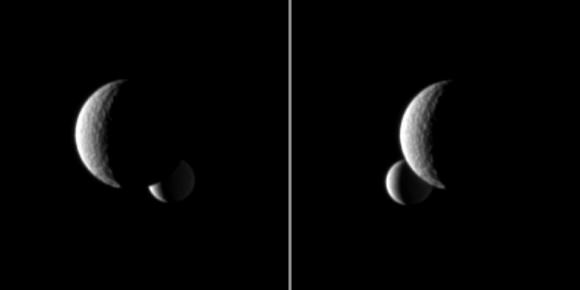
Enceladus and Tethys. Credit: NASA/JPL/Space Science Institute
Enceladus plays peek-a-boo behind the larger moon Tethys, as seen in this pair of Cassini spacecraft images.
The image on the left was taken a little more than a minute before the image on the right. These images are part of a “mutual event” sequence in which one moon passes close to or in front of another. Such observations help scientists refine their understanding of the orbits of Saturn’s moons.
The images were taken in visible light with the Cassini spacecraft narrow-angle camera on Nov. 11, 2009. Cassini was about 2.6 million kilometers (1.6 million miles) from Enceladus (504 kilometers, or 313 miles across) and 2.3 million kilometers (1.4 million miles) from Tethys (1,062 kilometers, or 660 miles across).
For more Cassini images see CICLOPS or NASA’s Photojournal

